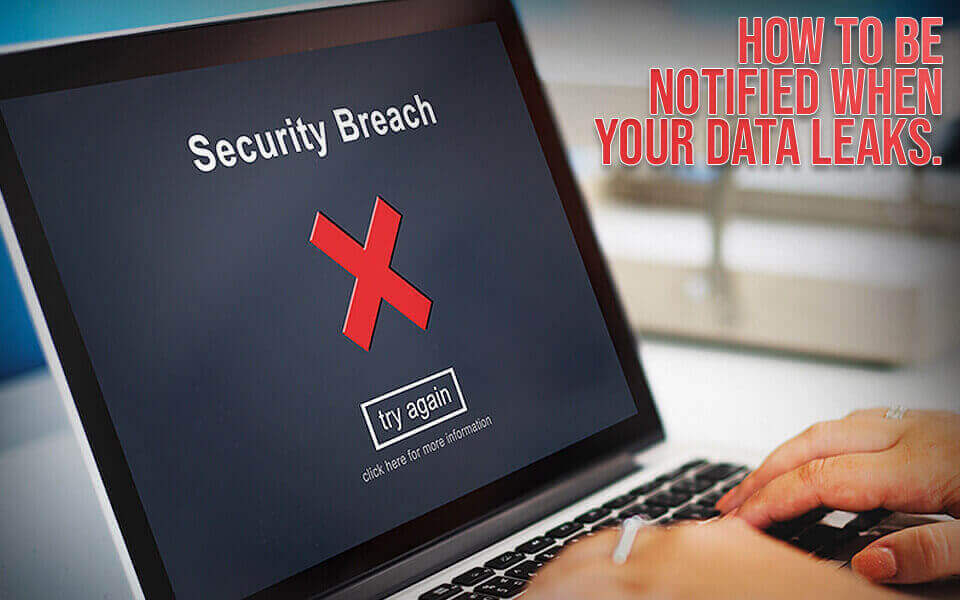How To Be Notified When Your Data Leaks?

Table of contents:
1. What are data leaks?
2. Unmasking common types of data leaks
3. What are some potential risks and damages involved in data leaks?
4. How can you safeguard against common mistakes in data leaks?
5. FAQs
Did you recently discover that you have been losing your confidential information through a data breach? Could be potentially. Tricksters extract your sensitive information, such as personal and monetary details, and use it further to deceive their next target. However, you would probably think about what to do next and potential steps to secure information from getting exposed. Further mentioned are certain measures that can secure and overcome potential data leaks.
What are data leaks?
Data leaks occur when sensitive information is unintentionally or maliciously exposed to unauthorised individuals or entities. This compromise can happen through breaches, hacks, or accidental exposures, which result in potential harm to unsuspecting and legitimate individuals or organisations. In addition, data leaks also encompass a range of prospects, from exposing personal information to large-scale security breaches affecting individuals or business entities, which highlights the need for strong cybersecurity measures and vigilant monitoring online.
Unveiling some common types of data leaks
There are some of the most common types of data leaks, which include:
1. Data exposure – Unauthorised disclosure of personal information such as names, addresses, phone numbers, and social security numbers.
2. Data breaches – Compromised usernames and passwords due to phishing attacks or breaches on websites and services.
3. Financial data breaches – Leaks of credit card information, bank account details, and financial transaction records.
4. Healthcare data leaks – Exposing sensitive medical records, treatment histories, and health insurance information.
5. Corporate data breaches – Unauthorised access to proprietary business data, customer records, trade secrets, and financial information.
6. Accidental sharing – Inadvertent exposure of data due to misconfigured privacy settings or accidental file sharing.
7. Insider threats – Malicious actions or negligence by employees or insiders leading to data leaks.
8. Cloud storage breaches – Misconfigured cloud storage settings that expose files containing sensitive data.
9. Social engineering attacks – The manipulation of individuals to divulge confidential information through deception.
10. Unsecured IoT devices – Data leaks through inadequately secured Internet of Things (IoT) devices connected to the internet.
What are some potential risks and damages involved in data leaks?
Data leaks have significant risks and damages that influence individuals, entities, and society as a whole. Mentioned below are some potential risks and damages associated with data leaks:
- Breaching privacy – Data leaks typically expose sensitive information, which includes personal and financial details such as names, addresses, phone numbers, social security numbers, medical records, and other monetary details. Additionally, this violation of privacy is capable of leading to harassment, stalking, identity theft, and other forms of personal distress.
- Identity theft – Identity theft involves exposure to personal information and compromising significant details such as names, financial data, and more, which causes financial and personal harm to unsuspecting individuals.
- Financial loss – Data leaks can result in financial losses for both individuals and organisations. Businesses might face legal and regulatory charges, filings, and damage to their brand reputation, which leads to a loss of customer trust and revenue dip.
- Intellectual property theft – Organisations’ trade secrets, proprietary information, and intellectual property can be exposed through data leaks. Competitors or cybercriminals are eligible to exploit this information to gain competitive benefits or replicate products or services without investing in research and development.
- Harming reputation – Public awareness of a data leak can erode trust in an organisation. Losing clients, partners, and investors could result from this, which would be injurious to the business’s reputation and long-term profitability.
How can you safeguard against common mistakes in data leaks?
Tricksters employ various deceptive techniques to lure unsuspecting victims into giving out sensitive information; however, there are a few tips you can abide by to safeguard yourself from common mistakes in data leaks, which include:
- Refrain from giving out sensitive information such as social security numbers, credit card details, personal information, and other financial information. Further, tricksters use this information to deceive other unsuspecting victims.
- Use strong passwords and change them regularly. A strong password should consist of 8–12 characters, which include alphabets (upper case and lower case), numbers, symbols, and more.
- Watch out for emails that appear to be from a legitimate source, such as your bank or credit card company, which in reality are phishing emails. These emails contain a link that, when clicked, will redirect you to a fake website that looks like the real website but, in reality, is designed to comprehend your personal information for deceptive purposes.
- Maintain the most recent version of your program. Security patches are certainly included with software updates, which can help safeguard your computer from potential viruses.
- Install a firewall and antivirus software on your devices. A firewall system can potentially help secure your computer from several advantages, like unauthorised access and antivirus software that can help safeguard you from potential malware systems.
- Encrypt your data on the websites or applications you visit. Encrypting your data can make it more difficult for hackers to access it if your computer gets compromised.
- Educate your employees about data security. Ensure that they know how to safeguard their sensitive data and report potential suspicious activity.
FAQs
Why is it essential to stay informed of a data breach?
Keeping up with data breaches enables you to respond quickly to safeguard your information and elude potential harm. This approach can entail changing passwords, keeping eye on your financial accounts, and taking relevant security precautions.
Can I take legitimate action if my data is breached?
Depending on your administration and the circumstances of the breach, you are eligible to have a bona fide strategy. However, it is crucial to consult with a legal professional to understand your rights and options in case of a data breach.
Caught up losing your confidential data online or through multiple sources? Connect to us to stay ahead of data leaks.


 4.7/5.0
4.7/5.0 3.5/5.0
3.5/5.0
